Polygon
Polygon was a scientific exploration to study the effect of realism in design on perceived social qualities of robots. Abstract, minimal robots are easier to produce and require less technology. If simple robots can provide meaningful social interactions with patients, there might be an opportunity for future product design.
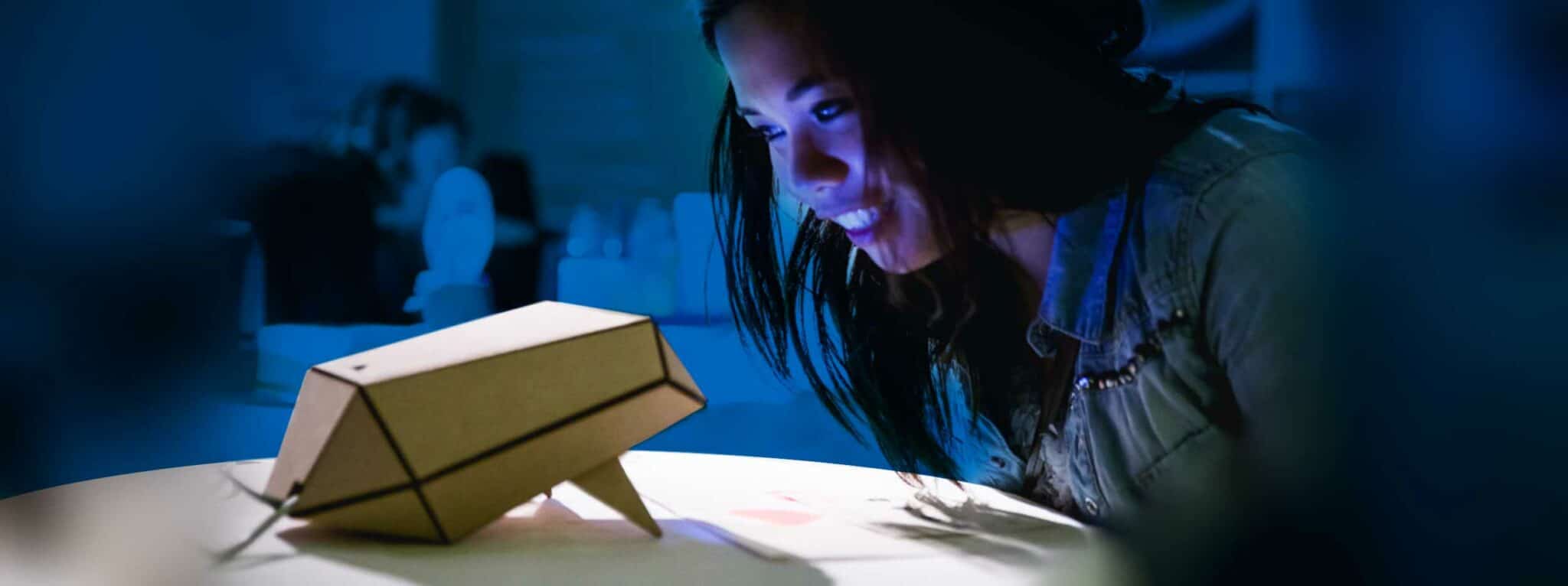
Polygon is a small, tabletop sized robot that is designed to have social interactions with people with acquired brain injury. Polygon is intentionally designed to represent something abstract and unfamiliar to make sure the user has no preconceptions about is functionality and to reduce any negative associations.
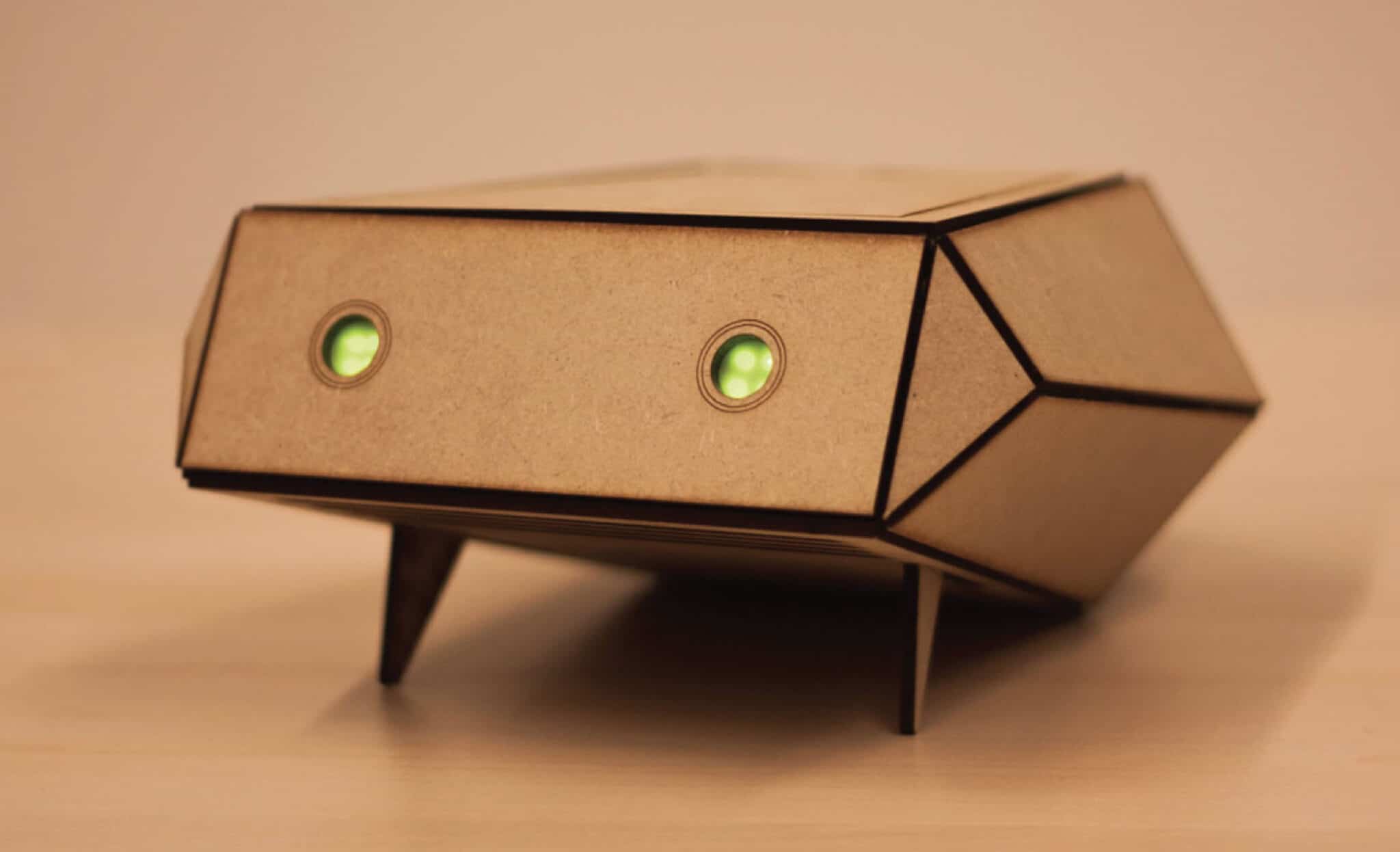
The design of Polygon went through several iterations. The earliest versions were paper prototypes to test scale and dimensions. Later variations were lasercut out of wood to give Polygon a warm and approachable aesthetic.
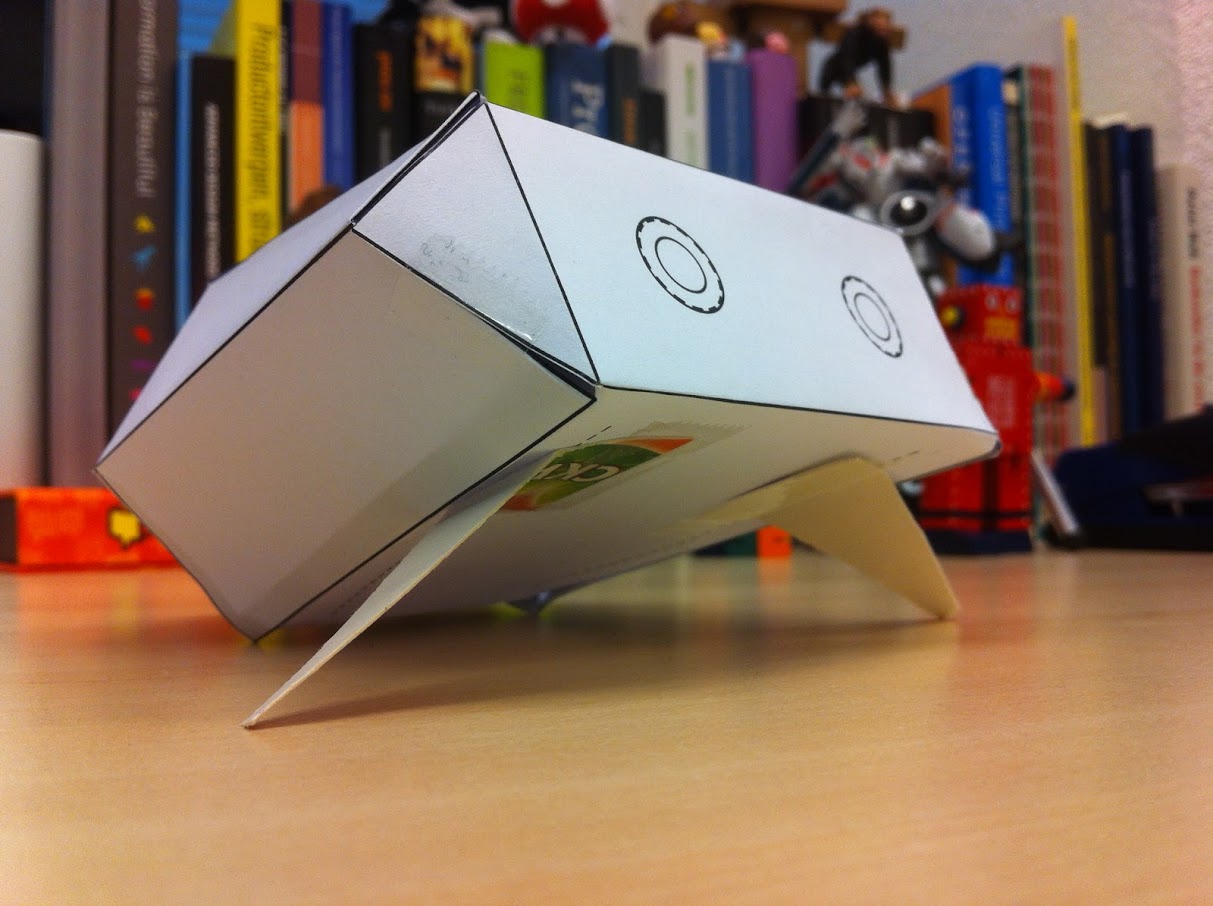
An early paper prototype of Polygon
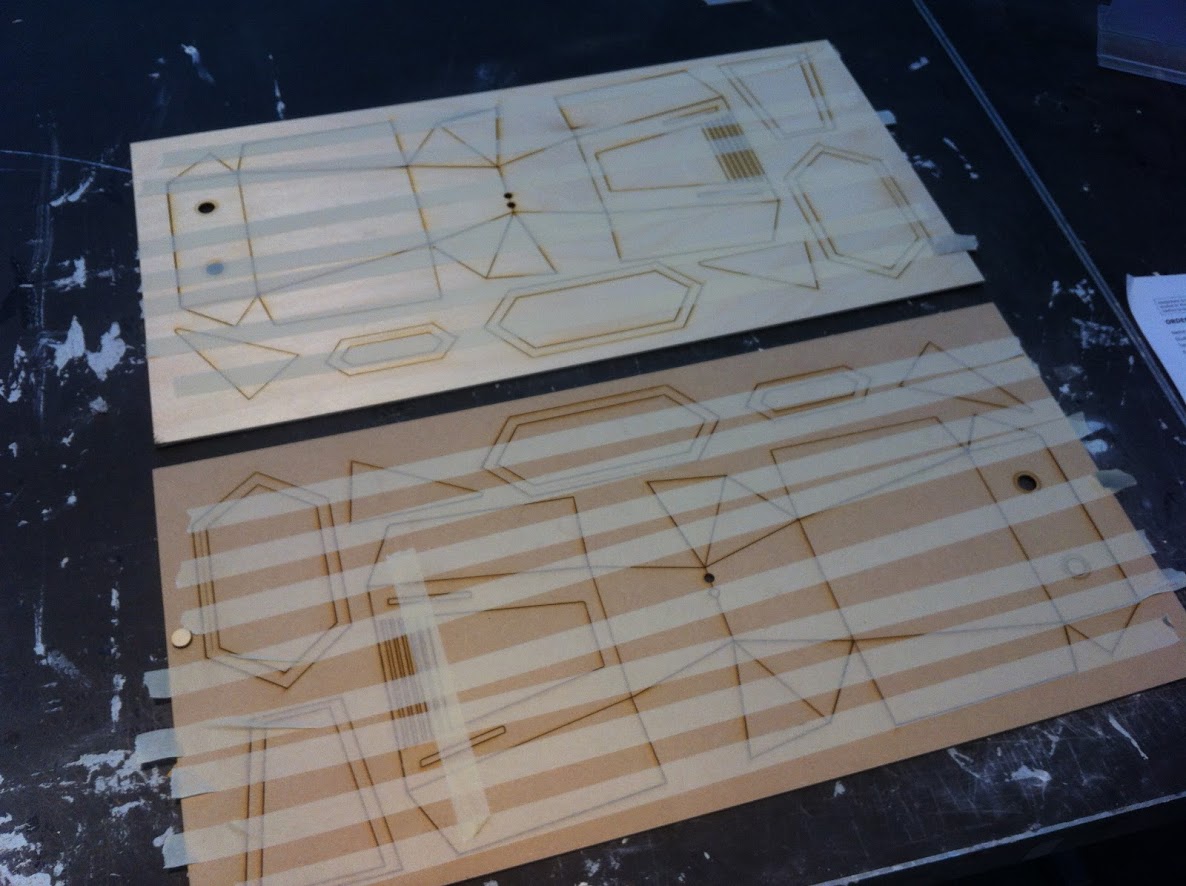
Lasercut components of two Polygons
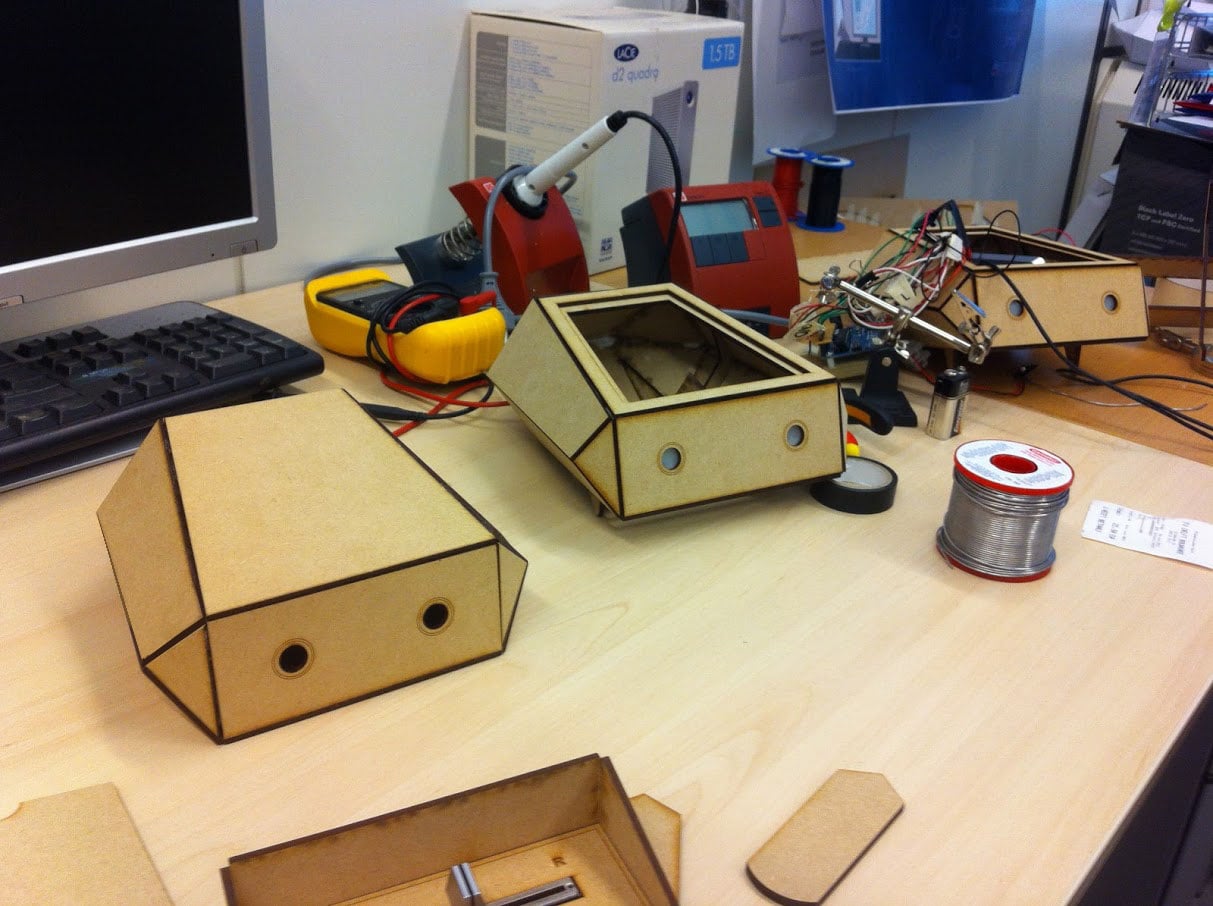
Polygon(s) during assembly process
The robot is able to speak (scripted dialogs), blink with its eyes, and move dynamically by retracting its legs. This makes Polygon a static robot, but capable of expressing liveliness through motion, eye gaze, and conversation.
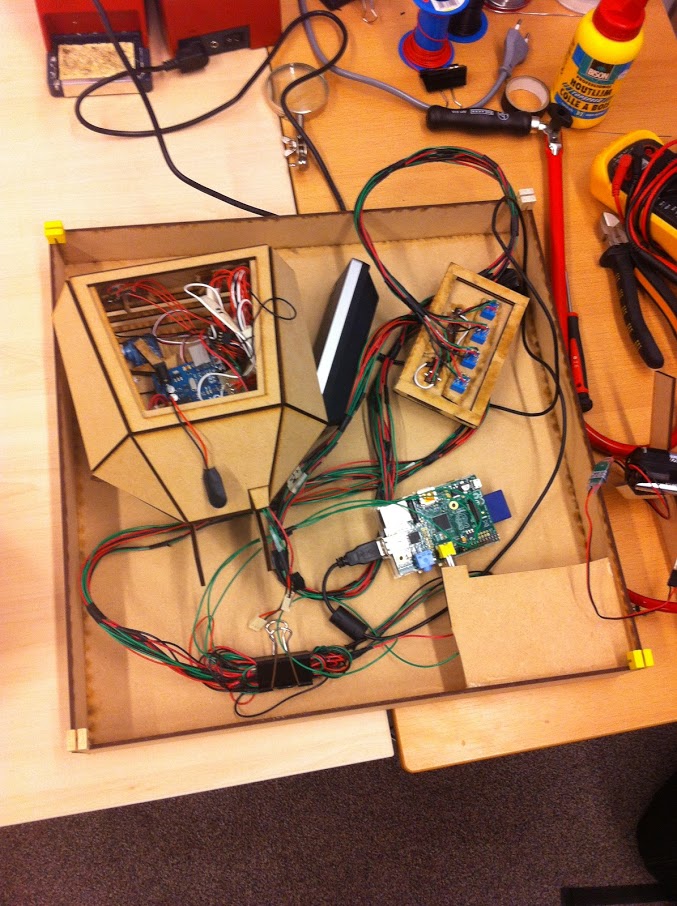
Below you can see the version of Polygon presented to people with acquired brain injury. Polygon's small design (30cm x 20cm x 15cm) made it approachable, non-threatening, and easy to introduce.
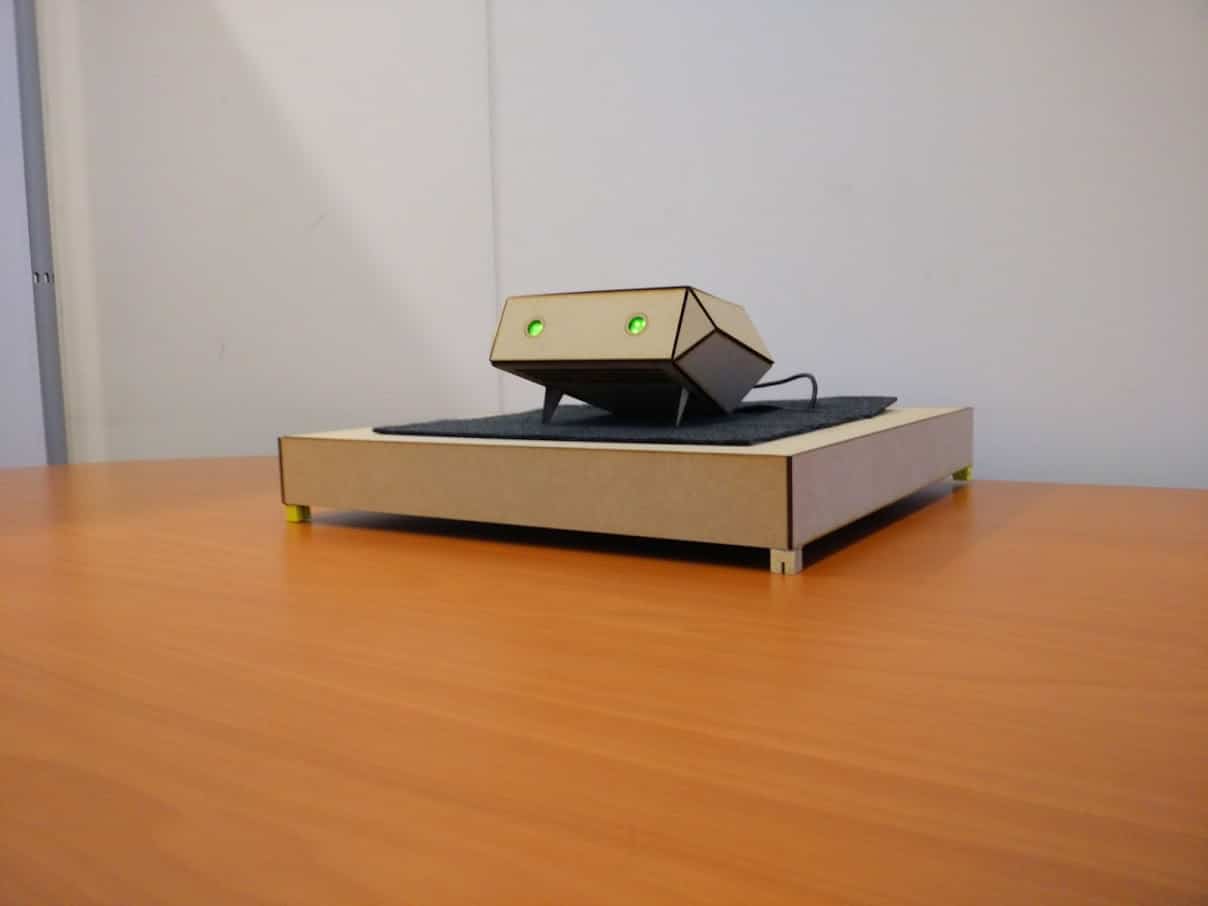
Refined versions of Tessa's embodiment
Three focus groups (N=34, 23 patients diagnosed with acquired brain injury, 11 healthcare professionals) were conducted at daytime activity centers. Results indicated that acceptance of minimal robots was very high, and could play a role in decreasing loneliness and increasing independence.
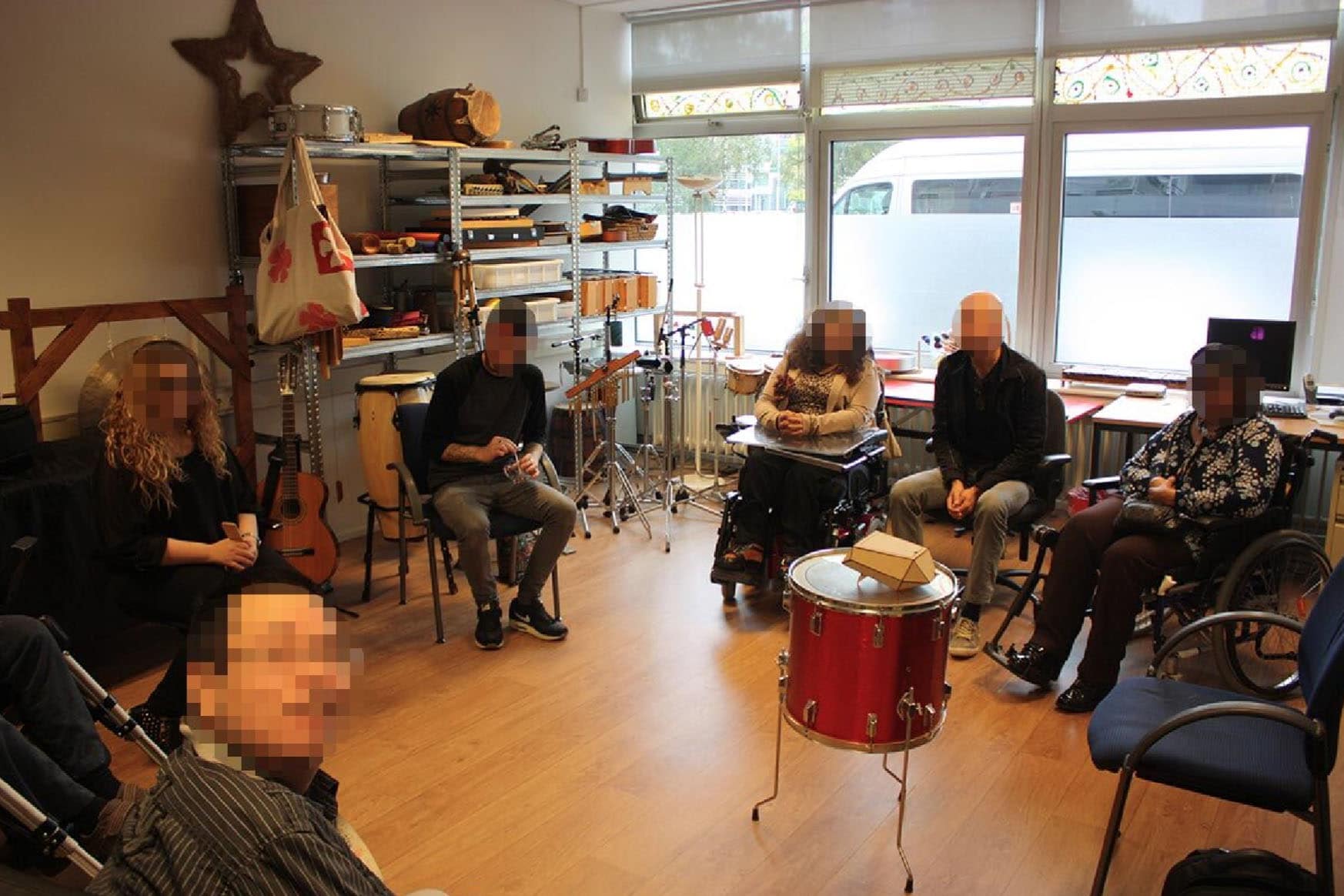
Polygon during a focus group with individuals with acquired brain injury
Besides focus groups and qualitative studies, Polygon was also used in controlled experiments, contrasting healthy students with acquired brain injury. Initial results were presented at the CHI 2015 conference in Seoul, South-Korea, concluding that robots with minimal realism could actually play a role in providing cognitive support.
Some of the early work of Polygon heavily influenced the design philosophy of the social robot Tessa and the startup Tinybots, which I co-founded. Tinybots creates robots that support people with cognitive disabilities such as dementia and acquired brain injury.
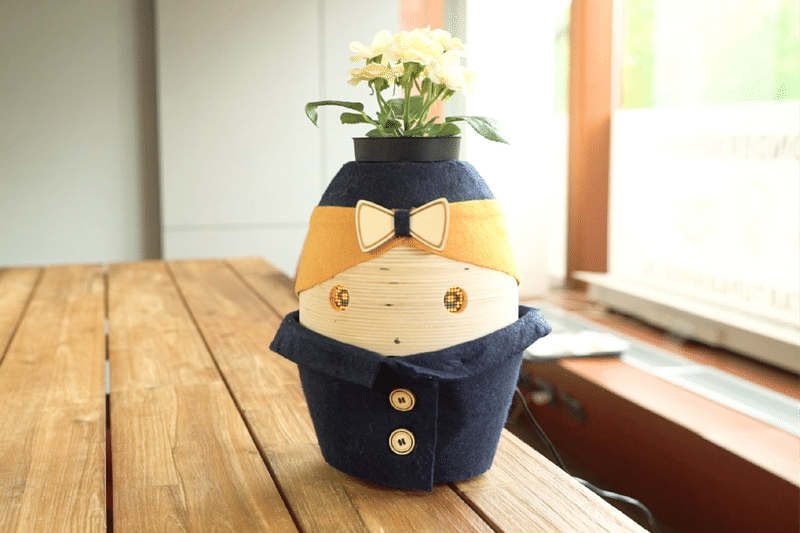
Tessa: the social robot for people with cognitive disabilities
